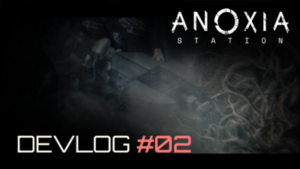In the realm of dark strategy games, where shadows deepen and every decision echoes with consequence, the visual landscape alone cannot fully immerse the player. Take for instance the HR Giger inspired graphic elements of Anoxia Station. It’s the subtle, yet pervasive, power of atmospheric sound design that truly plunges them into the heart of the experience, crafting a palpable sense of fear and tension. This isn’t merely background noise; it’s a meticulously crafted symphony of unease, a vital tool for shaping the player’s emotional journey.
The Power of Subtlety: Beyond Jump Scares:
Unlike horror games that rely on sudden, jarring sounds, dark strategy titles leverage subtle atmospheric soundscapes to build a sense of dread. The rustling of wind through desolate ruins, the distant cries of unseen creatures, and the creaking of decaying structures all contribute to a constant undercurrent of tension. This ambient dread seeps into the player’s subconscious, creating a sense of unease that permeates every strategic decision.
Sound as Information: A Vital Strategic Tool:
Beyond atmosphere, sound design provides crucial information. The distant clang of metal might signal an approaching enemy. Skilled players learn to listen intently, using sound as a strategic tool to anticipate threats and gain a tactical advantage.
Crafting Unique Soundscapes: Immersing Players in the World:
Each dark strategy game world possesses its own unique sonic identity. From the echoing caverns of a subterranean city to the desolate plains of a post-apocalyptic wasteland, sound designers meticulously craft soundscapes that reflect the environment’s character. This attention to detail enhances immersion, drawing players deeper into the game’s narrative and atmosphere.
For Anoxia Station, we went for a mix of the deafening roars of shifting rock, the harsh sounds of mining and welding, the distant clicking of something clearly inhuman, and a familiar scream.
The Psychological Impact: Manipulating Emotions:
Sound designers wield a powerful psychological tool, manipulating emotions through carefully curated soundscapes. The use of dissonant harmonies, low-frequency rumbles, and unsettling silences can create a sense of unease, fear, and even paranoia. This emotional manipulation amplifies the game’s tension, making every strategic decision feel fraught with consequence.
The Importance of Dynamic Sound Design:
In a dynamic strategy game world, sound design must be equally adaptable. Soundscapes should react to player actions, environmental changes, and in-game events. This dynamic approach ensures that the soundscape remains engaging and immersive, constantly evolving to reflect the ever-changing game state.












